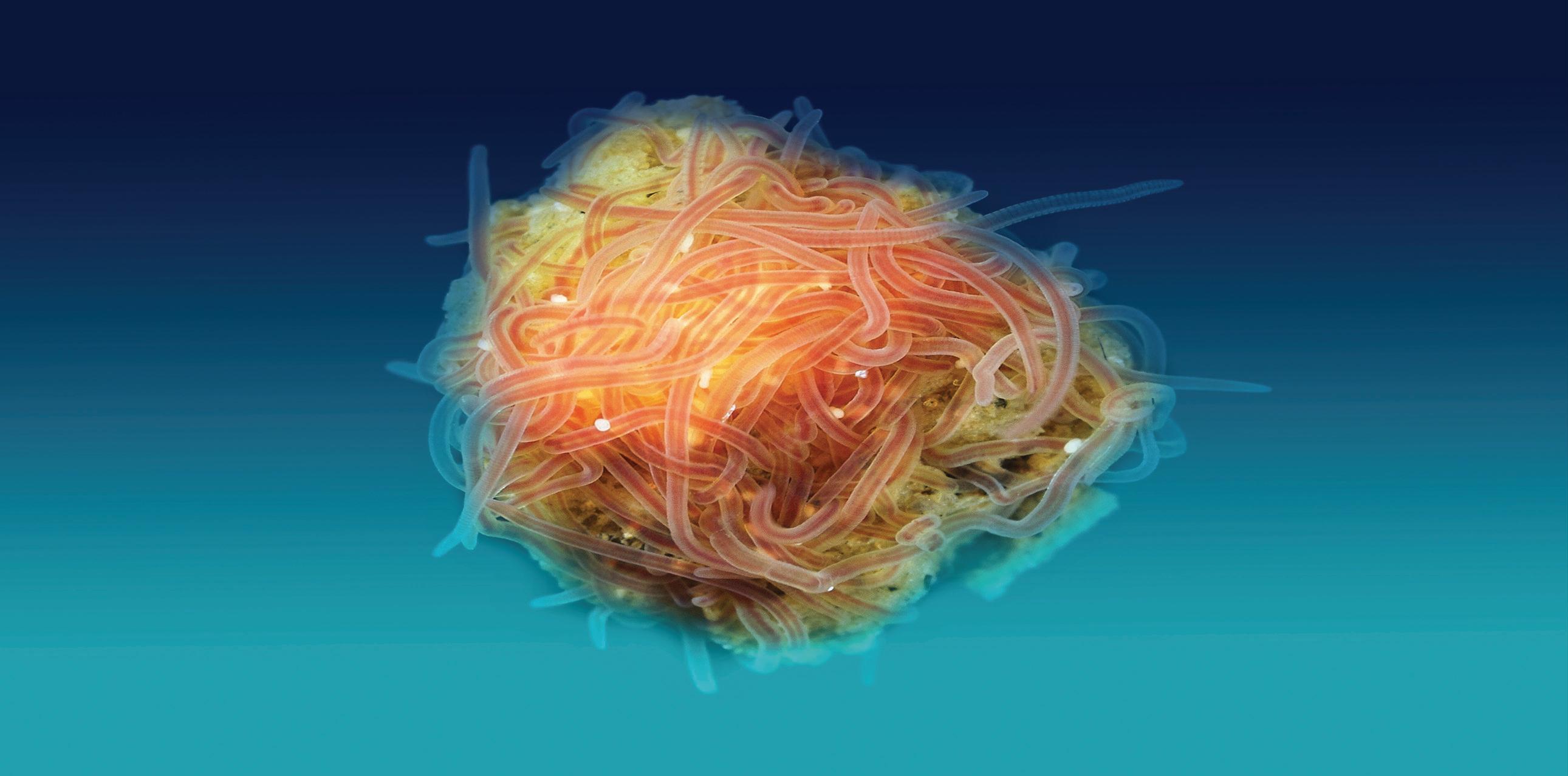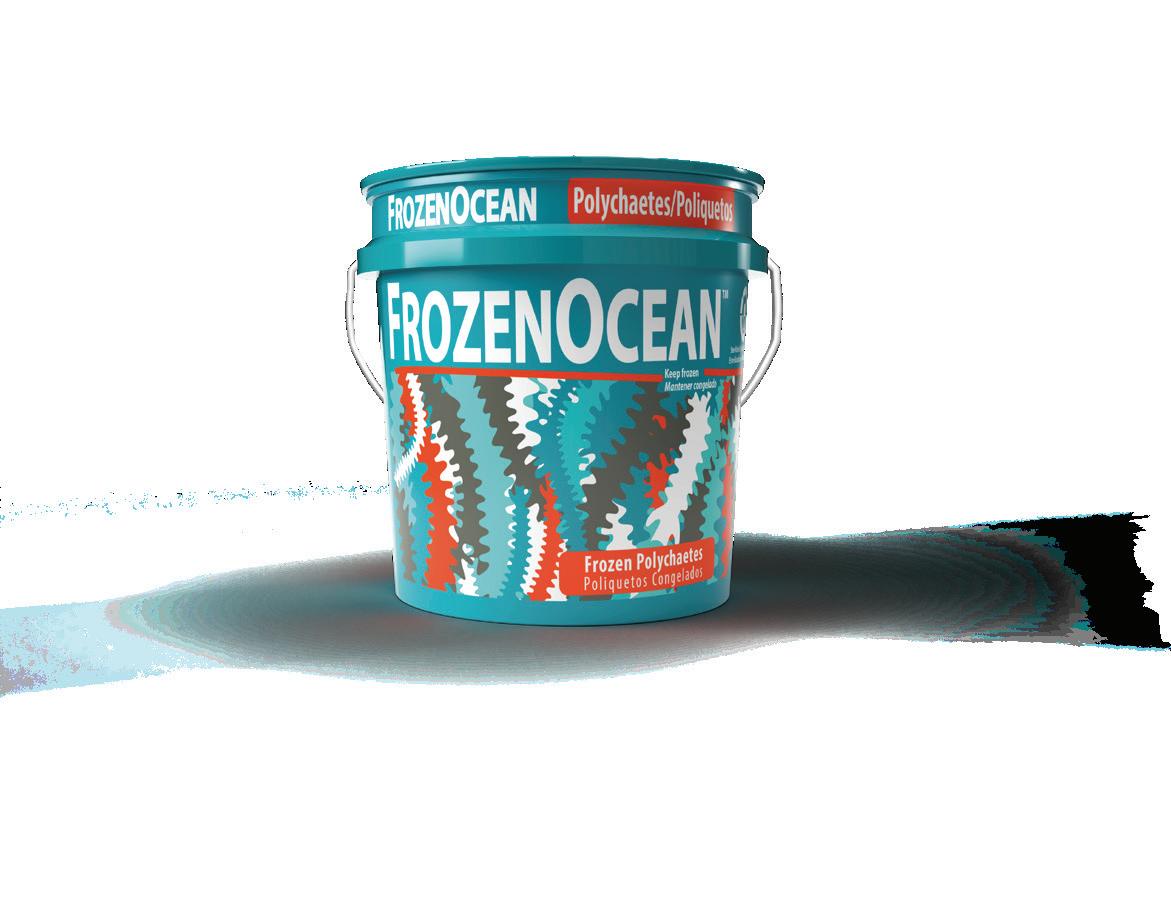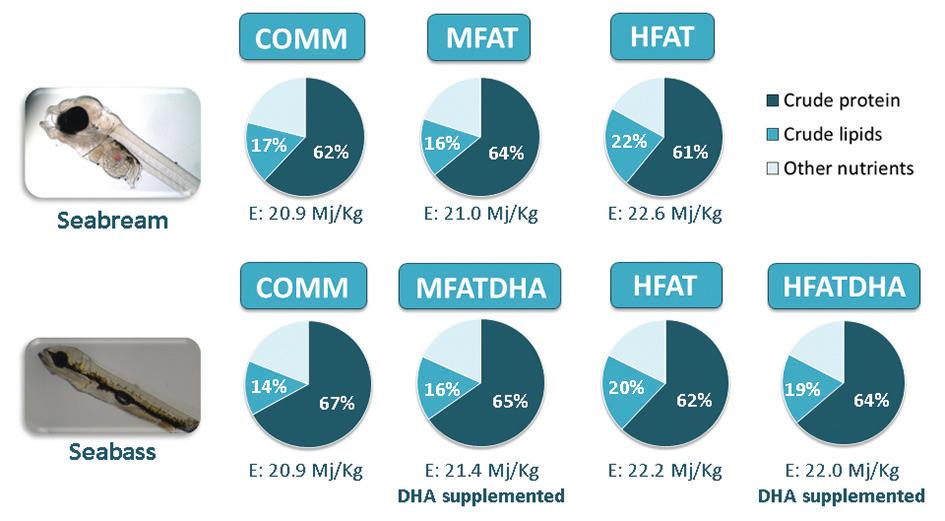
14 minute read
Do high energetic needs mean high dietary lipid levels?
Do high energetic needs mean high dietary lipid levels? The road to tailored diets for marine fish larvae
Wilson Pinto1, Maria Morais1, Sara Castanho2, Ana Candeias-Mendes2, Ana Gamboa2 , Florbela Soares2, Susana Pereira3,4, Benjamin Costas3,4, Pedro Pousão Ferreira2 and Luís E.C. Conceição1
1 Sparos Lda, 2 IPMA – EPPO, Portuguese Institute for the Ocean and Atmosphere (IPMA), 3 Centro Interdisciplinar de Investigação Marinha e Ambiental (CIIMAR), 4 Instituto de Ciências Biomédicas Abel Salazar (ICBAS), Universidade do Porto
Optimal dietary lipid levels are still unknown for most marine fish larvae
Although the quality of commercial microdiets has significantly increased during the last few decades, it is fair to say that our knowledge of the quantitative and qualitative nutritional requirements of fish larvae still remains at the tip of the iceberg. Still, it is generally accepted that fish larvae have high nutritional requirements, mostly due to their fast growth, which in some species/stages can reach over 50% per day, but also due to their energetic predatory and swimming behavioral pattern. Fish larvae have therefore a high requirement not only for proteins, which deposited in muscle tissues are the building blocks for growth, but also for lipids, which are mainly directed towards energy production and are a source of essential longchain polyunsaturated fatty acids (e.g. docosahexaenoic acid - DHA), vital pieces for physiological balance, organogenesis and formation of cellular membranes.
In commercial microdiets for fish larvae, proteins account for the largest fraction, generally around 56-62% of diet weight. However, levels found in the lipid fraction are more variable, ranging between 9-20% of diet weight. This variability in dietary lipid levels of commercial microdiets may occur because determining an optimal dietary lipid level for a given species at the early developmental stages is extremely difficult. On one hand, the main metabolic fate of dietary lipids in
Figure 1. Proximal composition of microdiets tested in experimental trials with traditional species. Values expressed in diet wet weight basis; COMM: commercial diet; MFAT and HFAT: diets containing moderate and high fat levels, respectively; HFATDHA: diet containing high fat levels and supplemented with DHA; crude protein percentages are represented in white over the dark blue areas of the circles; crude lipid percentages are represented in white over the medium-light blue areas of the circles; E – crude energy values.
marine fish larvae is towards energy generation. On the other hand, energy production is also dependent on the catabolism of amino acids, which belong to the protein fraction of the diet. Energy production in fish larvae is therefore largely affected by the protein and lipid fractions of the diet, and both factors cannot be dissociated in energy yielding.
The term “lipids” is a generic noun for organic compounds that are grouped together on the basis of being soluble in organic solvents, including fatty acids,
phospholipids, sphingomyelins, waxes and sterols (NRC, 2011). Although there is considerable information on the requirements of essential fatty acids such as EPA (eicosapentaenoic acid) and docosahexaenoic acid (DHA) (Tocher, 2010), and the ratio of phospholipids to neutral lipids in marine fish larvae (Morais et al., 2007), dose-response studies including several dietary levels are extremely scarce (Hamre et al., 2013). Traditionally, these studies were impaired by technical difficulties related to the low acceptance of diets, nutrient leaching and low digestibility. However, with progress in feed production technologies and ingredient quality, we are now better positioned to increase our knowledge in larval nutritional requirements and optimal dietary levels. To this end, this study aimed at reviewing optimal ranges for dietary lipids levels in early life stages of traditional – gilthead seabream (Sparus aurata) and European seabass (Dicentrarchus labrax) – and emerging fish species, such as greater amberjack (Seriola dumerili), meagre (Argyrosomus regius) and Senegalese sole (Solea senegalensis), for European aquaculture.
Response to diets containing high lipid and energy levels is species-specific
A series of experimental trials was conducted during the first few weeks of development of target species: gilthead seabream (22-58 days after hatching; DAH), meagre (20-46 DAH), European seabass (23-56 DAH;) – all at IPMA-EPPO –, greater amberjack [33-78 DAH; Futuna Blue España SL; data from Navarro-Guillén et al. (2019)] and Senegalese sole (31-65 DAH, SPAROS Lda). In these trials, larvae were reared in triplicate tanks under standard zootechnical conditions and fed ad libitum on diets containing different nutritional profiles, with experimental variables focusing on lipid and energetic values. Premium practical ingredients (e.g., squid meal, krill meal, fishmeal, wheat fish oil, DHA-rich algae products and soybean lecithin) were used to formulate and produce experimental diets according to the proximal composition shown in Figures 1 (traditional species) and 2 (emerging species). At the end of the trials, growth performance, survival, liver histology, feed conversion ratio and biochemical parameters related to oxidative stress were analyzed.
Results showed that the capacity to deal with high dietary lipid/energy levels varied among species. In
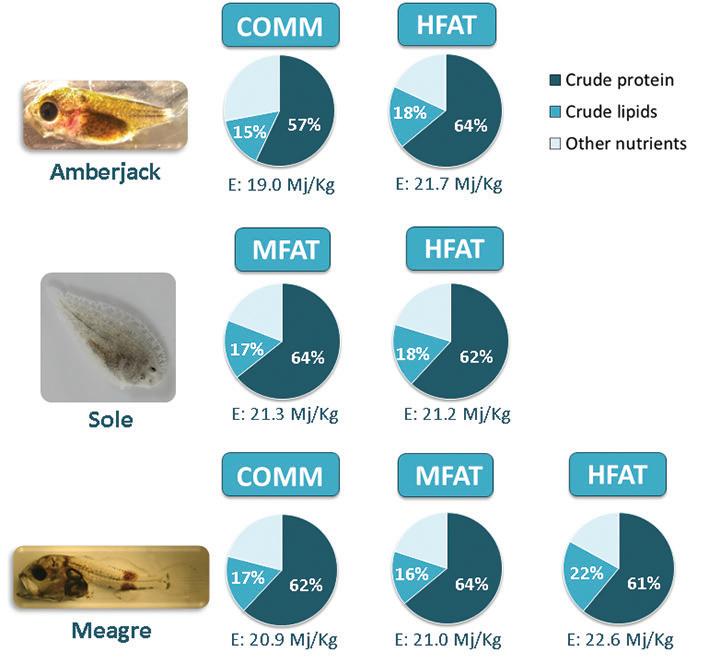
Figure 2. Proximal composition of microdiets tested in experimental trials with emerging species. Values expressed in diet wet weight basis; COMM: commercial diet; MFAT and HFAT: diets containing moderate and high fat levels, respectively; crude protein percentages are represented in white over the dark blue areas of the circles; crude lipid percentages are represented in white over the medium-light blue areas of the circles; E – crude energy values.
comparison with MFAT, feeding on HFAT diets, which contained higher lipids/energy levels, represented a very relevant increase in terms of growth performance for seabream, meagre, amberjack and seabass larvae (Fig. 3). Conversely, Senegalese sole larvae fed on the MFAT diet had a significantly higher weight and a lower FCR (MFAT: 1.0 vs HFAT: 1.6) than larvae fed on the HFAT diet at the end of the trial. In addition, significant differences were found between treatments for survival in the seabream and meagre trials.
In seabream, the HFAT diet resulted in a significant increase in survival in comparison to the COMM diet (HFAT: 58% vs COMM: 43%). In meagre, the same trend was observed, with the COMM diet resulting in a survival of 14%, whereas values of 22 to 28% were found in the MFAT and HFAT treatments, respectively. In the remaining trials, no significant differences were observed between treatments for fish survival, with values of 75 to 80% being reached in seabass, 81 to 83% in amberjack (Navarro-Guillén et al., 2019) and 80 to 85% in Senegalese sole.
Interestingly, the differential effects of dietary treatments for target species were not limited to
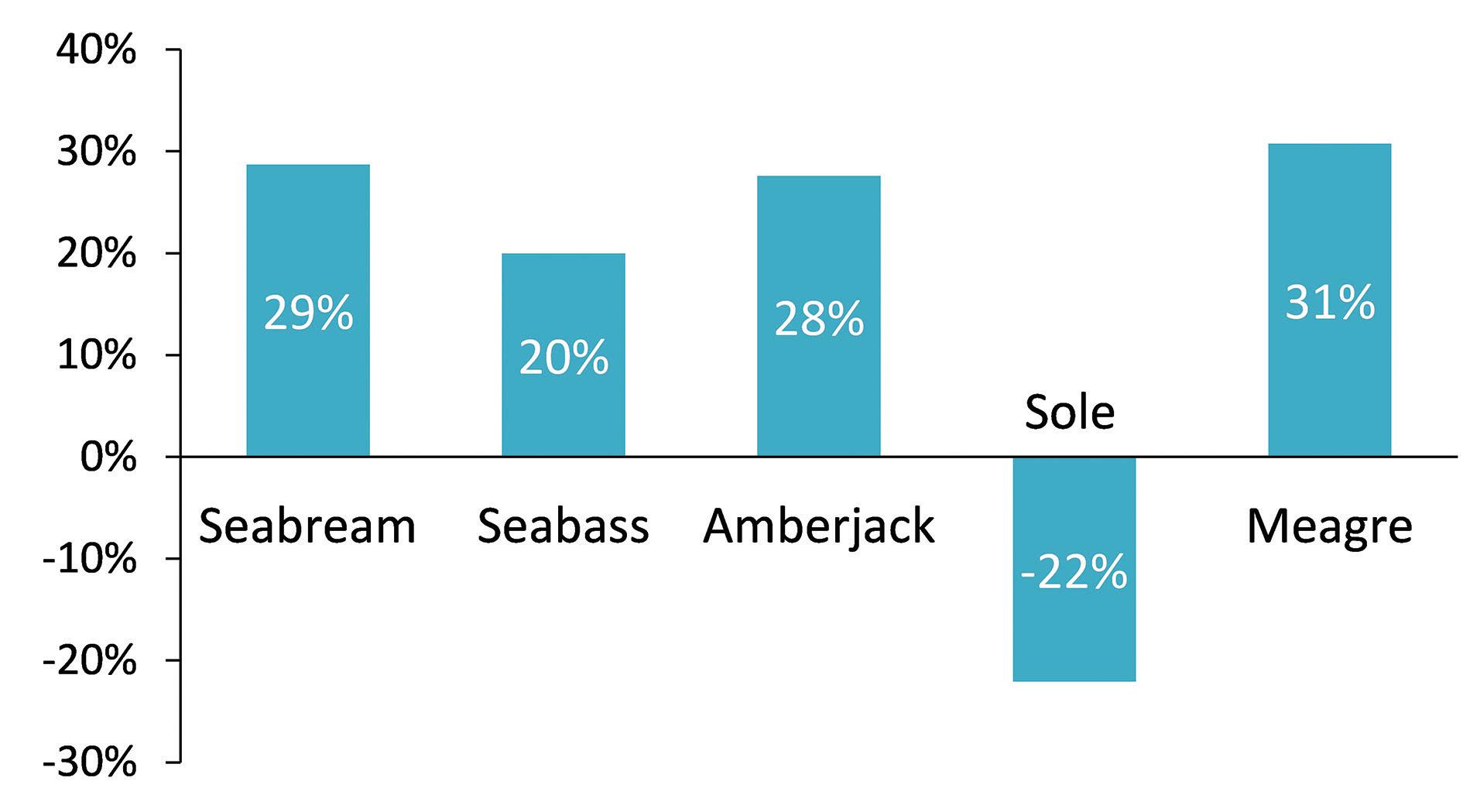
Figure 3. Variation in final weight in larvae of different species fed a diet containing high lipid levels (HFAT) versus a diet containing moderate lipid levels (MFAT). Positive values indicate a higher final weight variation in fish from the HFAT treatments, as opposed to negative values, which indicate a higher final weight variation in fish from the MFAT treatment.
traditional criteria such as growth, feed conversion ratio and survival. Namely, results for the seabass (Fig. 4) and amberjack trials showed a significant increase of vacuolization area in the liver of fish fed commercial diets. In seabass, liver vacuolization area reached 28% in COMM, as opposed to values reached in experimental diets (15 to 16%). In amberjack, lipid vacuolization reached 25 and 19% of liver areas in COMM and HFAT treatments, respectively. Although it should be made clear that these results do not represent signs of a severe steatosis, they still suggest that lipid metabolism and transport in fish larvae is highly dependent on the quality and form of lipids included in the diet and not only on its quantitative level. This conclusion can also be inferred from results obtained in oxidative stress biomarkers analyzed under the scope of this trial. For instance, analysis of oxidative stress biomarkers in fish from the HFATDHA treatment, which was approximately isoenergetic and isolipic to the HFAT treatment, showed a higher lipid peroxidation and a lower ratio of reduced to oxidized glutathione in whole larvae.
These findings indicate that supplementing DHA in a diet already containing high lipid levels may lead to an increase in oxidative stress. These findings were most likely verified because DHA is more susceptible to peroxidation due to its long-chain and high unsaturation degree.
Towards tailored nutritional profiles in microdiets for traditional and emerging species for European aquaculture
High lipid/energy diets resulted in beneficial effects for species with higher activity patterns and growth rates, such as greater amberjack (Navarro-Guillén et al., 2019) and meagre. However, it can also be observed that these benefits were also observed in seabream and seabass, species that attain lower growth rates at early developmental stages, but also have a clearly active behavioral pattern. In the case of seabass, it was interesting to observe that dietary DHA supplementation did not bring additional benefits to those verified for larvae fed high dietary lipid levels. Such findings suggest that DHA levels in the HFAT diet already fulfilled seabass DHA requirements and an additional supplementation of this polyunsaturated fatty acid was likely not necessary. In fact, DHA supplementation had an impact on oxidative stress biomarkers, indicating that dietary DHA levels adopted in the HFATDHA diet were most likely above an optimal level.
Senegalese sole was the only species showing a lower growth performance when dietary lipid levels increased. Therefore, contrarily to the remaining species of the current study, there was no beneficial effect for sole to feed on a diet containing higher lipid levels. A previous
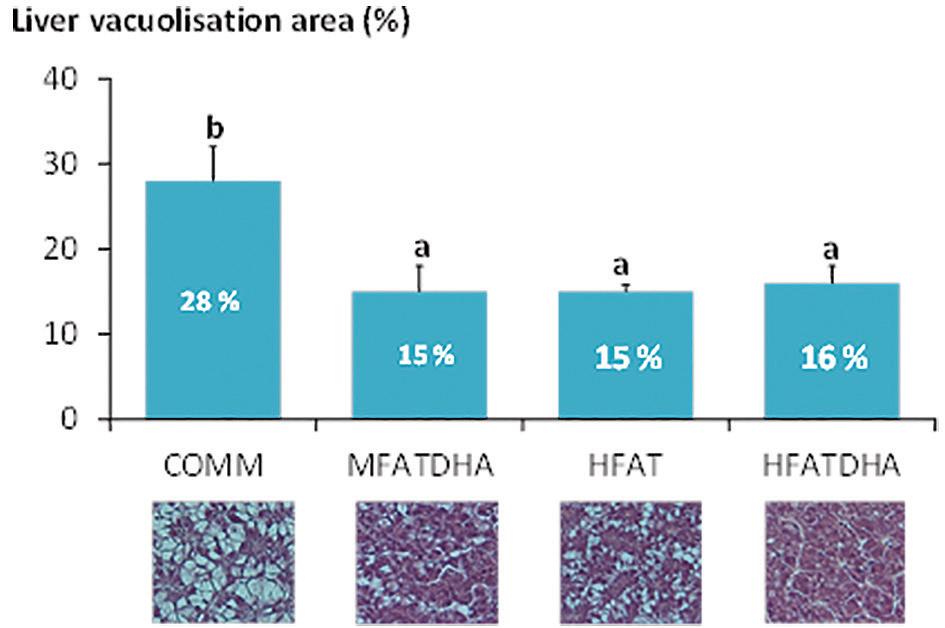
Figure 4. Liver vacuolization area in seabass larvae fed diets containing different lipid and energy values. COMM: commercial diet; MFAT and HFAT: diets containing moderate and high fat levels, respectively; HFATDHA: diet containing high fat levels and supplemented with DHA. Pictures below each dietary treatment illustrate the level of lipid vacuolization found in liver hepatocytes of fish from each treatment.
study by Pinto et al. (2016) showed that increasing dietary lipid and DHA levels increased Senegalese sole post-larvae growth performance. However, it should be taken into account that diets tested under the scope of that study varied in lipid composition from 6 to 13% (diet wet matter basis), with these levels being below those for both diets (MFAT and HFAT) tested in the current study. Interestingly, sole can be considered the least active species of those targeted in the current study, suggesting that high dietary lipid levels may be more adequate for species with a more active behavioral pattern. It is likely that a high energy input derived from dietary lipids may spare dietary proteins from being allocated for energetic purposes, being available for deposition in muscle tissues and growth purposes, as observed in juveniles of several fish species.
In general, results from the current study show that the nutritional profile of a single diet will not be optimized for the early stages of different species targeted for aquaculture. Hence, optimal dietary lipid levels and fatty acid profiles should be determined for the early-life stages of each species. Future endeavors should focus on the creation of tailored diets that comply with each species’ nutritional requirements.
References available on request.
Acknowledgements
This work is part of project 39948_FeedMi, supported by Portugal and the European Union through FEDER/ ERDF, CRESC Algarve 2020 and NORTE 2020, in the framework of Portugal 2020.
More information: Wilson Pinto
Researcher & Product Manager Sparos E: wilsonpinto@sparos.pt

Developments in aquaculture from BLUEGent
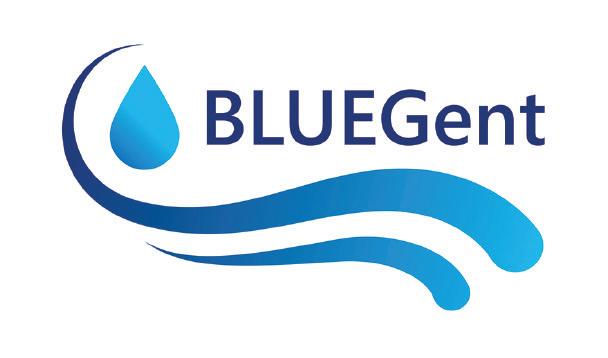
Prof. Dr. Ir. Tom Defoirdt
Center for Microbial Ecology and Technology (CMET), Ghent University Antivirulence therapy: Disarm your microbial enemies
Disease outbreaks are a major limitation to increasing aquaculture production. Vibrios are amongst the major bacterial pathogens of aquatic organisms, causing severe diseases, such as acute hepatopancreatic necrosis disease (AHPND). This results in up to 100% mortality, and losses of up to more than $1 billion per year in the shrimp industry alone. Antibiotics are still critically important as a first-line therapy for the treatment of bacterial infections, both in humans and animals. However, bacteria showing clinically relevant resistance to antibiotics consistently appear within as little as a few years after the first use, and bacteria have now developed resistance against all known antibiotics.
A major reason for this is that the modes of action of the currently available antibiotics are primarily variations on a single theme: bacterial eradication. Such mode of action imposes strong selective pressure for resistance development, i.e., a mutant that is resistant to an antibiotic will be able to multiply in the presence of the antibiotic, whereas its antibioticsensitive competitors will be killed. As a result, resistance is spreading rapidly, rendering antibiotic treatments ineffective.
As a consequence of the frequent use of antibiotics in order to control bacterial diseases in aquaculture, aquaculture is a major source of antibiotic resistance genes, and this is an important problem with respect to public health. Antibiotic resistance is common in aquaculture pathogens and in human pathogens that are associated with seafood. This is only the tip of the iceberg, since the pathogenic bacteria that are screened for antibiotic resistance are only a fraction of the total microbial community that is associated with seafood, and the other (harmless) bacteria can also contain antibiotic resistance genes. These genes can often be transmitted to other bacteria, including human pathogens.
It is clear that on the one hand, controlling bacterial diseases in aquaculture is essential to assure food security, whereas, on the other hand, the practice of using antibiotics for this purpose is causing major problems for food safety. Hence, there is an urgent need for novel methods to control bacterial diseases in aquaculture.
Antivirulence therapy
Infection by bacterial pathogens is caused by the production of different virulence factors, i.e., molecules or cell structures produced by pathogens that enable them to colonize or harm their host. As virulence factors are required for infection, preventing pathogens from producing them constitutes an interesting alternative strategy for the control of disease, and this strategy is called antivirulence therapy. Rather than killing, antivirulence therapy aims at “disarming” the pathogens, thereby preventing them from attacking their host. Importantly, little to no negative impacts on the harmless and beneficial bacteria within the host are expected. This is in sharp contrast to antibiotics, which not only kill the pathogens but also harmless and beneficial bacteria. This can result in problems associated with the loss of the functions performed by these harmless and beneficial bacteria (e.g., their contribution to digestion). These problems can persist for some time after ending the antibiotic treatment because beneficial bacteria have to recolonize the host again before their beneficial activity can restart.
As antivirulence therapy does not kill the harmless and beneficial bacteria, this kind of problem will be prevented. Another advantage of antivirulence therapy
is that it imposes less selective pressure for resistance development when compared to conventional antibiotics, i.e., a resistant mutant will have a smaller advantage over the sensitive competitors because antivirulence therapy does not kill these competitors.
Quorum sensing in aquaculture
Virulence factors and the activities associated with them are often metabolically costly to the cells that produce them, and therefore, their expression is tightly controlled by various regulatory mechanisms. Amongst the best-characterized virulence regulatory mechanisms are bacterial cell-to-cell communication systems, called quorum sensing. Quorum sensing is a gene regulation mechanism in which bacteria coordinate certain processes (including the production of virulence factors) in response to the presence of small signal molecules. Vibrios belonging to the Harveyi clade (i.e., Vibrio harveyi and closely related species like Vibrio campbellii and Vibrio parahaemolyticus) are model species in quorum sensing research. These bacteria contain a three-channel quorum sensing system (using three different signal molecules), that controls the expression of different virulence factors and that is required by these pathogens to attack their host.
During the past 15 years, several agents capable of inhibiting three-channel quorum sensing systems in aquaculture pathogens have been identified, and these agents have been proven to be effective in controlling disease in various aquatic host-pathogen systems. The agents tested in these studies included natural and synthetic compounds, and (metabolites produced by) micro-organisms. As a whole, these studies can be considered as a proof-of-principle for the concept of antivirulence therapy for aquaculture as they have proven that disease can be prevented by interfering with the three-channel quorum sensing system of the pathogens. However, in contrast to vibrios belonging to the Harveyi clade, the three-channel quorum sensing systems of other species such as Vibrio anguillarum, Vibrio crassostreae and Vibrio tasmaniensis have no effect on their virulence. Therefore, we need to develop novel inhibitors that target other molecular pathways.
Even though many bacteria have been known for a long time to produce substantial amounts of indole, its biological role as a signaling molecule has only relatively recently been revealed. We have recently shown that indole controls the virulence of vibrios belonging to the Harveyi clade. Adding indole significantly decreased motility, biofilm formation and exopolysaccharide production, which are virulence factors that enable the pathogens to attack their host. We also found that natural indole analogues that are produced by plants and (micro)algae (e.g., the plant hormone indole-3acetic acid) have a similar effect as indole. Finally, we have shown that indole also controls the virulence of other Vibrio species, including Vibrio anguillarum, Vibrio crassostreae and Vibrio tasmaniensis. The current research now focuses on the further exploration of natural sources of indoles (bacteria, algae) as well as on identifying synthetic indole analogs with a stronger effect than indole to be used as novel virulence inhibitors to control Vibrio disease. Altogether these results show that disarming pathogenic bacteria by using virulence inhibitors is a valid alternative to the use of antibiotics.
